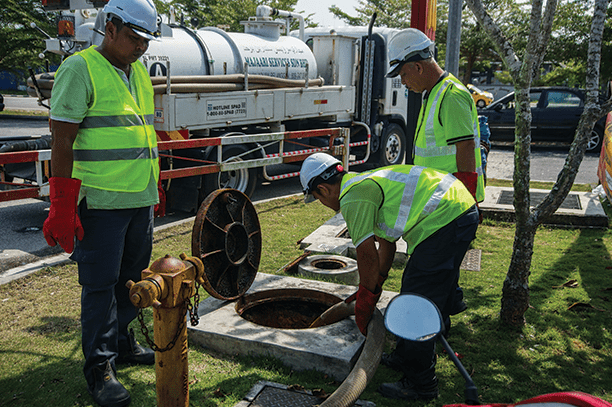What are Lift Stations?
A lift station is a pump station designed to move the sewage or wastewater from lower to higher elevations using a collection system. These septic lift stations are primarily used to move wastewater from commercial and residential facilities to their final destination.
Lift station installation is important as it is primarily used to reduce the initial capital construction costs of gravity flow sewer systems. It often requires digging deeper than 10 feet below the surface to install a sewer line.
In this article, you will get a brief idea about lift stations and how they work, and we will share a few tips you can consider in case you are considering installing lift stations for wastewater treatment.
How do Lift Stations Work?
For a sewage collection system, a lift station plays an important role. Raw sewage makes its journey underground in sloped pipelines. Septic system installation near me takes advantage of gravity to keep costs down. This kind of pipe system is commonly referred to as a gravity pipeline.
Lift station components
A functional wastewater lift station consists of multiple working components and parts. Lift station components include:
- Electric motors
- Screen grinding to remove coarse materials
- Associated valves
- Pumps and compressors
- Power supply system
- Equipment control and lift station alarm system
- Odor control and ventilation system.
Types of Lift stations
Municipalities in charge of collecting and treating the wastewater for septic tank pumping in Molalla commonly use two types of lift stations. The dry well pump is the traditional one, and the submersible pump is more modern.
Important features of a lift station
A wastewater lift station that is well designed will address several requirements to achieve maximum effectiveness;
- Future expansion capacity should not be burdened
- Maintenance and operation should be tracked.
- Avoid the overflow by detecting high levels in advance
- Pump capacity needs to exceed treated wastewater quantity.
Wastewater lift station standards
The most effective Septic Design in Molalla, a well-designed wastewater lift station, must accommodate certain qualities. It has to adhere to certain following standards:
- Match the pump capacity with the quantity and quality of wastewater being treated
- operate reliably without any interruption
- Avoid excessive release of odors
- Avoid the overflow and flooding
- Often streamlined maintenance and operation.
- No, restrict future capacity and expansion needs.
Maintenance of lift station
Sewage is a hazardous material that needs to be handled and treated carefully. Wastewater operators must know that life station operators are keenly aware that lift stations require routine maintenance. Keeping the maintenance record is not enough; it often has legal requirements. There are so many septic tank pumping services available that you can take the help of it for incorporating lift stations at your workplace or anywhere for wastewater management.
Conclusion
Lift station plays an important role in septic system service, so choose the best service for wastewater management.
To know more about Septic Pumping in Molalla, visit us at American On Site Septic store, or call us to fix an appointment for a home consultation. We are here to guide you and assist you in solving all your queries regarding the lift station and septic tank installation.






